Itinerary edited by the UNIVERSITY OF BARI 

The testimonies of the past environments to understand the natural processes of the present. The long geological history of Puglia falls under a series of global changes from the upper Paleozoic, a time interval to which the oldest rocks recognized in outcrop and subsurface. The peculiar evolutionary history of this region is extensive documented in the collections of the Museum of the Department of Earth and Geo-environmental Science of the University of Bari. The rock samples selected to build this path are evidence of sediment that accumulated in the past, now formed landmass that we know under the name of Puglia. Since the Cretaceous, these samples represent in chronological order, from oldest to most recent, very different existing environments, fauna, flora and climatic conditions, until today still active in very limited areas. Puglia is what remains of a portion of the Earth's surface known as plaque Apula, once part of the African Plate, and corresponding to the current central Mediterranean region.
 The Apulian plate
The Apulian plate
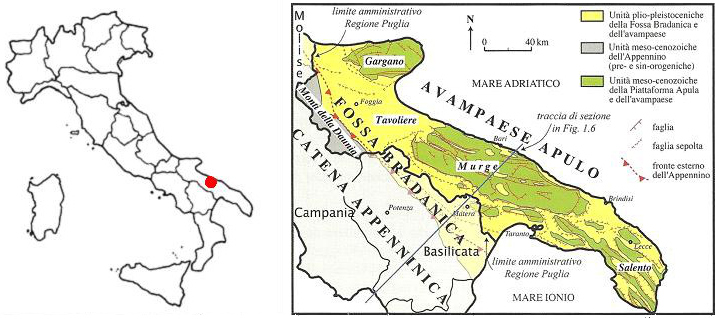
The Apulian plate was characterized by the presence of carbonate platforms, separated by deep sea basins, the remains of which can be recognized in the large limestone rock of the Gargano, Murge and Salento, representing modest flaps of the Apulia Platform. The latter has developed and transformed by combining the processes of emergence and submersion of both global and local origin, with typical deep sea environments, coasts, lagoon, or, continental of which you can observe obvious and widespread evidence in the excavations of the territory of Puglia.
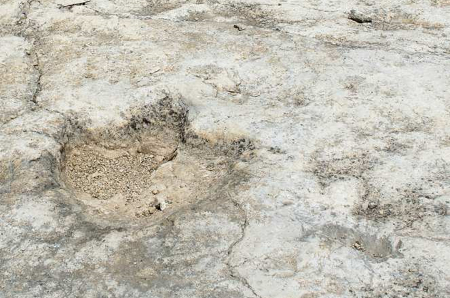
 Prehistoric swamps and marshes
Prehistoric swamps and marshes
Partial emerging phenomena, due to global changes in sea level and tectonic deformation (lifting, subsidence, buckles), allowed the exposure of large areas of the platform with the formation of vast swamps and marshes crossed by large land animals, such as evidenced by the discovery of numerous dinosaur footprints in different areas of Apulia, particularly among the towns of Altamura and Molfetta.
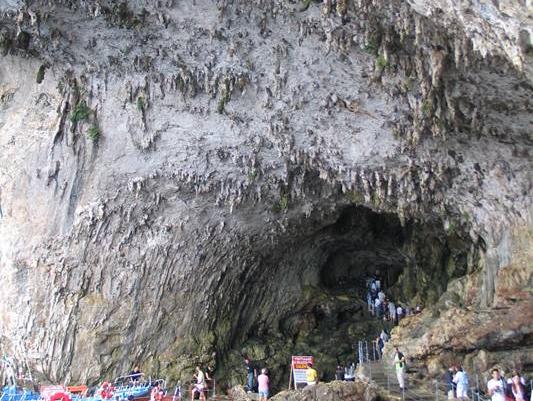
 Karst
Karst
For a comprehensive process of slow lowering of the sea level, at the end of the Cretaceous (about 65 million years ago) the Platform Apula emerges and becomes a large continental area, mostly prone to karst, no longer able to foster accumulation of impressive thickness of carbonate sediments.
The presence of deep karst depressions of 'surface, such as the “puli” (local name to define sinkholes) and underground karst formations such as caves are evidence of lifting and emergence of the Apulian carbonate platform.
The Register of apulian Caves has cataloged more than 3,000 cavities and is available at the web address consultation: http://www.catasto.fspuglia.it

The Karst is one of the main indicators of the lifting of such territories as now recognize as Puglia. Especially the lifting of the last tens of millions of years, which is more easy to see obvious traces. Let’s more closely at some of the aspects that characterize it and some of its forms very present in Puglia and simplest description and observation.
The karst is a chemical phenomenon that leads to the dissolution of the rocks in the presence of CO2-rich waters.
The crucial element is the "karst base level" that controls the phenomenon. The relationship between sea level and dry land are the basis of the whole process. The karst occurs as much as long is the way of rainwater to achieve the basic level provided by the sea. We will use a scheme Castiglioni (1986), to better represent certain conditions of the environment in which the phenomenon occurs.

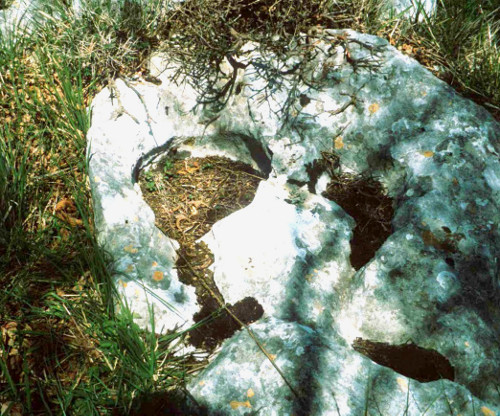
There are two types of karst: epigean, if it refers to surface phenomena, and underground, it is in depth.
 The epigean karst phenomena (surface)
The epigean karst phenomena (surface)
Among the forms of aboveground erosion, we can identify, according to the scale:
 Sinkholes or "doline"
Sinkholes or "doline"Among the best known macroforms in Puglia we can certainly remember the sinkholes. Shown below are some characters who for decades have reference to the scientific world (from Castiglioni, 1986).
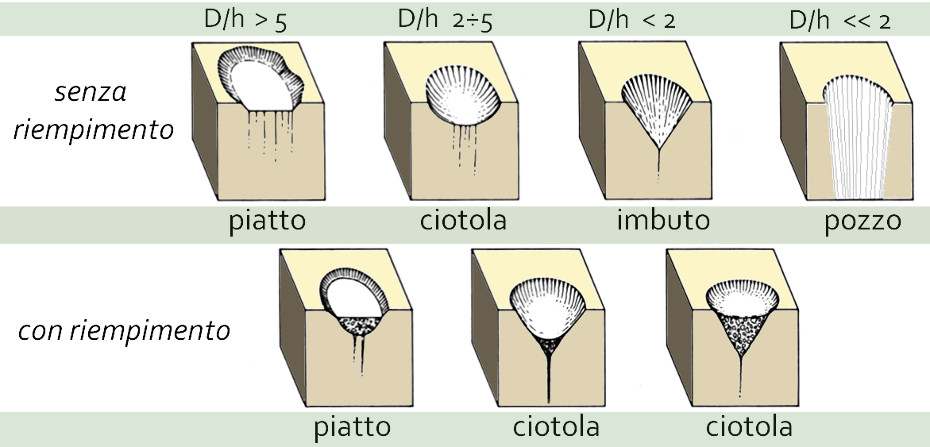 doline or sinkhole = closed depression of more or less circular shape with dimensions which vary from 10 to 1000 m (D) and depth (h) from 2 to 200 m
doline or sinkhole = closed depression of more or less circular shape with dimensions which vary from 10 to 1000 m (D) and depth (h) from 2 to 200 m
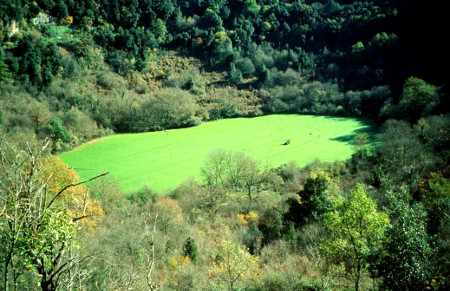 The Dolina Pozzatina (Gargano).
The Dolina Pozzatina (Gargano).It is one of the largest sinkholes in Europe, also visible from space. It has a maximum diameter of up to 650 meters and a depth of about 100 meters.
It’s an example of aboveground karst erosion macroform and is considered to be a sinkhole collapse.
Sometimes the sinkholes are evidence of underground karst forms that become increasingly large, so that the facings thin and collapse.
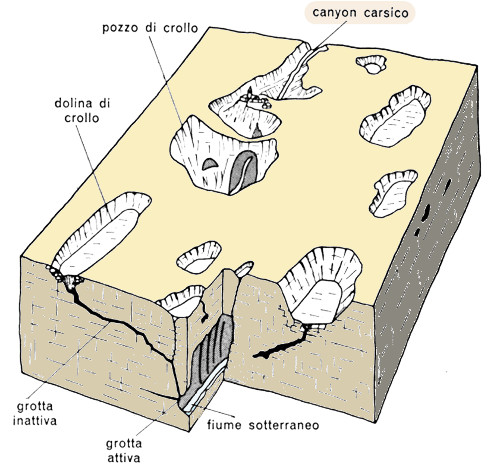
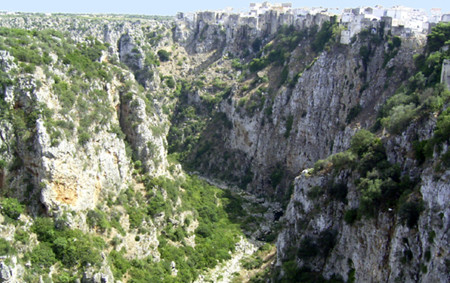
 Karst valleys
Karst valleys
Another example of karst macroforms very common in Puglia are the karst valleys. It is reported, by Castiglioni (1986) certain aspects of their genesis.
Karst valley is the result of the karstification of river valleys.
Dead Karst valley, where you have no stream
Blind karst valley: there is the stream but does not get to run off for a superficial way
One can well understand how, further proof of the platform lift, are the numerous gravines that mark the Apulian Ionian coast.
Gravines (macroforms also known as karst valleys), as well as being evidence of a past environment that saw the Puglia crossed by streams virtually non-existent today, have niches both for fauna and flora. Moreover, in some cases, the gravine have hosted whole rock villages, whose testimonies are of great cultural interest.
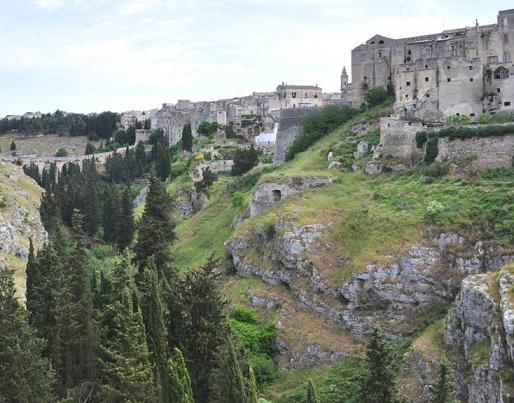
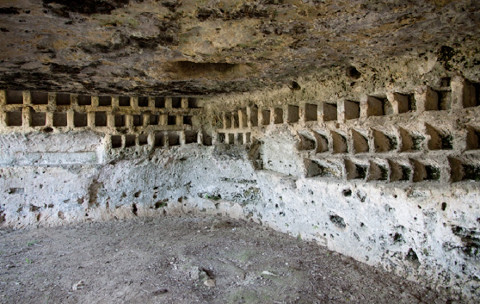
To gravines are related stories and folktales. Among the most famous one of the Magician Greguro who, in Massafra Gorge with her daughter Margheritella, around year 1000 drew up his own laboratory with medicines and curative unghenti, derived from medicinal plants.
La Farmacia del Mago Greguro, Gravina di Massafra (Ta).
(Foto dal sito http://www.massafraturismo.it)
 Epigean accumulation forms
Epigean accumulation forms
There are various forms of epigean accumulation:
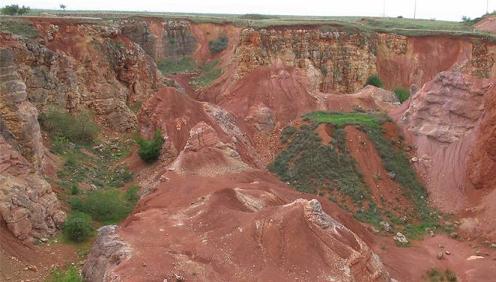
Another typical testimony of emergences occurred in the course of the geological history of the Apulia Platform, is the presence of "red earth" or "bauxites". These are residual deposits that occupy surfaces and irregular pockets, interspersed with the carbonate sequence of the platform. These deposits, consisting for the most part from oxides and hydroxides of iron, aluminum and manganese, represent the end result of the process of dissolution of karst's surface by the atmospheric agents, which with take place through the process of dissolution of calcium carbonate (CaCO3). The most representative deposits are found at the stratigraphic transition between the limestone of Bari and the limestone of Altamura.